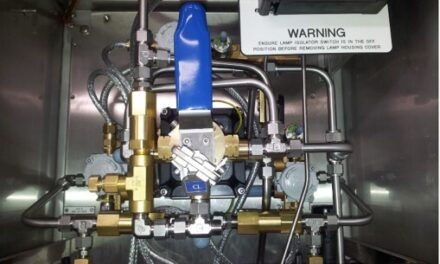An on-site trial at a ciabatta bread bakery has demonstrated that it is possible to successfully pump viscous, sticky dough products, even when they are mixed with baked bread. SEEPEX UK’s customised enclosed, automated waste removal solution has been proven to optimise the bakery’s waste handling process, reducing the labour needed to remove waste and improving hygiene levels in the production area.
In preparation for an upcoming expansion, the owners of a bakery manufacturing ciabatta loaves and baguettes identified waste removal as an inefficient task. In order to meet the exacting demands of retailers and consumers, any loaf which is outside specification, and any dough which is of an incorrect consistency, cannot pass through the supply chain and is deemed ‘waste’ (although it is in fact recycled as animal feed). This non-compliant waste material was being handled manually – after being collected from the production line, it was placed into bins, which were then taken outside and loaded into a designated lorry provided by the animal feed company.
In a bid to find an alternative solution that could reduce manpower, improve hygiene standards and optimise the waste removal process, the bakery’s owners approached progressive cavity (PC) pump supplier, SEEPEX UK. With a long history of working in the food and beverage industry, SEEPEX has forged a reputation as a problem-solver, becoming known for delivering customised solutions for challenging applications.
Understanding the problem
Although SEEPEX had experience of working with bakeries in the past, its engineers approached this brief with fresh eyes. “We have learnt that no two projects are ever the same,” explains Joao Rodrigues, Applications Engineer. “One bakery can have totally different needs to another. The challenge in this instance was not just that dough is a difficult substance to pump – it is prone to bridging in hoppers – but also, that the variety of materials being handled (dough, baked and waste bread) behave so differently. Dough is a highly viscous product – it is dense, wet and sticky; fresh bread is light and compressible; and waste bread is hard and non-flowable. We needed to create a solution that could handle all three of these very different substances, and to do that we needed to understand how they would behave in a pump, both separately and together.”
SEEPEX’s engineers worked closely with the client to understand in detail each of its waste products, as well as the volumes being generated, and the manufacturing process. “After collecting all the necessary information, our engineers analysed it and combined it with the experience we have gained over years of working on other food and beverage projects,” says Joao. “We then devised a preliminary solution, which the client opted to trial on-site.”
A sophisticated solution
The solution proposed by SEEPEX comprised a BTM open hopper pump. As the waste product contained a high volume of solid and viscous material, which can be difficult to feed into the pump, the BTM has an auger that mixes the different products and prevents them from bridging in the hopper. The pump also contains integral static and rotating knives which reduce the particle size and produce a pumpable consistency. This then passes into the pumping elements of the stator and rotor, and is transferred through enclosed pipework into the removal lorries.
Improving hygiene, increasing efficiency
 As a fully automated, enclosed solution, this system has the potential to greatly improve hygiene standards at the factory. The existing manual system often results in waste product falling or being dropped onto the factory floor, creating an unhygienic and hazardous environment. Movement of waste from production areas to the outside of the bakery can also present further hygiene problems.
As a fully automated, enclosed solution, this system has the potential to greatly improve hygiene standards at the factory. The existing manual system often results in waste product falling or being dropped onto the factory floor, creating an unhygienic and hazardous environment. Movement of waste from production areas to the outside of the bakery can also present further hygiene problems.
In contrast, the only open part of the new SEEPEX solution is the hopper, into which waste product is loaded. After that, every part of the system is enclosed, including delivery of the waste into the removal lorry. There is no need for anyone to enter and exit the factory, and the reduction of spillage means the factory floor can be kept clean and tidy. The combination of these factors improves hygiene as well as health and safety.
Crucially for a company that is expanding, a fully automated solution means that only one person is required to load product into the hopper, freeing resources for production. Furthermore, the level controls inside the hopper mean that the pump only starts running when there is product to handle, and stops the moment the hopper is empty, making it an extremely energy efficient solution.
“During the trial, every possible combination of product mix was tested, at varying volumes. The system coped well with every variation and the client requested no changes from the preliminary solution we proposed,” adds Joao. “As the next phase of its expansion progresses, we expect this system to revolutionise how the company treats its waste in the future.”
Not such a sticky situation
Joao concludes: “Viscous, sticky dough products have been notoriously difficult to pump in the past, often causing blockages in the pump. Using an open hopper BTM pump with an integral auger and knives, this solution offers manufacturers of bakery products such as pizza, cakes, bread and scones, an efficient, safe and hygienic way to dispose of their viscous, sticky and non-flowable waste.”


